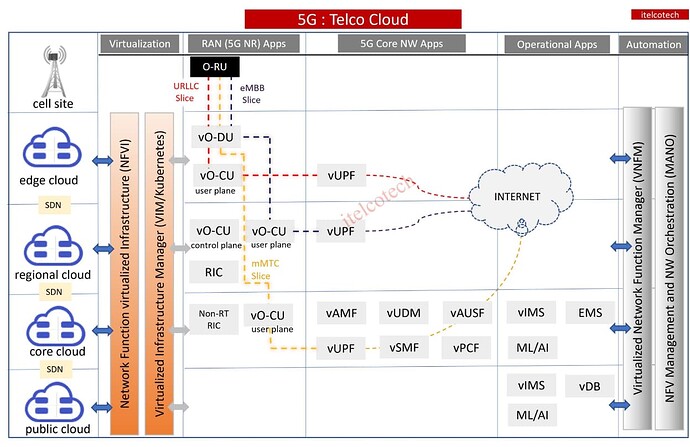A Telco Cloud is a software-based cloud infrastructure that enables a flexibility to place the 5G network functions/applications and divide the single infrastructure into multiple network slices for delivering wide range of services from eMBB to URLLC. It also enables to add services faster, respond quickly to changing demands, and manage resources efficiently and automatically.
Building blocks of telco cloud are network function virtualization (NFV), software defined network (SDN), edge computing, and microservices.
-
Network Functions Virtualization (NFV) allows to abstract functions away from hardware, allowing standard servers to be used for functions that otherwise require proprietary hardware. NFV architecture broadly contains:
a) Network functions virtualization infrastructure (NFVI) consists of three main components - compute, storage, networking on a platform to support software, such as a hypervisor or a container management platform to run different 5G network apps.
b) Virtualized network functions (VNFs) are software applications that deliver different network functions in 5G.
c) Management, automation, and network orchestration (MANO) provides the framework for managing NFV infrastructure and provisioning new VNFs. -
Software-Defined Networking (SDN) is an emerging architecture for midhaul/backhaul that is dynamic, manageable, and adaptable, making it ideal for dynamic nature of 5G applications. This architecture decouples the network control and forwarding functions enabling the network control to become directly programmable.
-
Microservices break down network functions and applications into loosely coupled systems that are resilient, observable, and simple to manage using DevOps cycles and CI/CD approach.
Reference - ORAN alliance, ETSI, ONF
Source: ![]()
